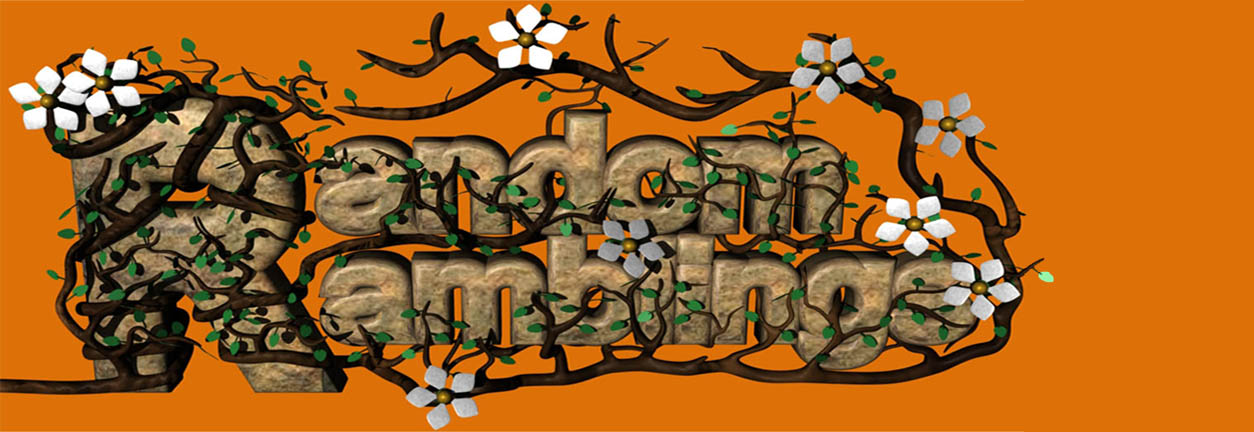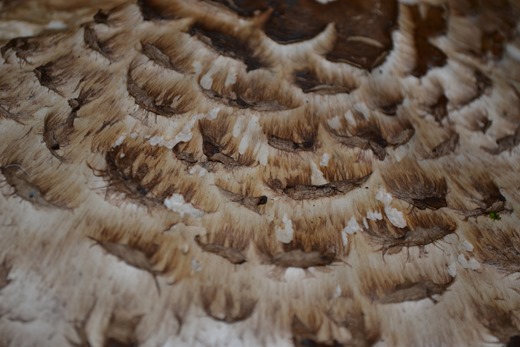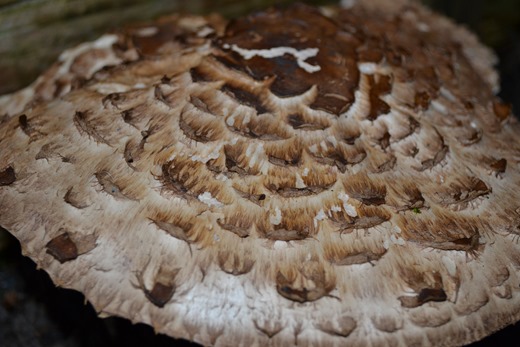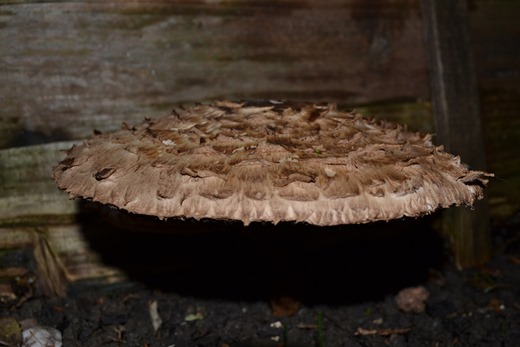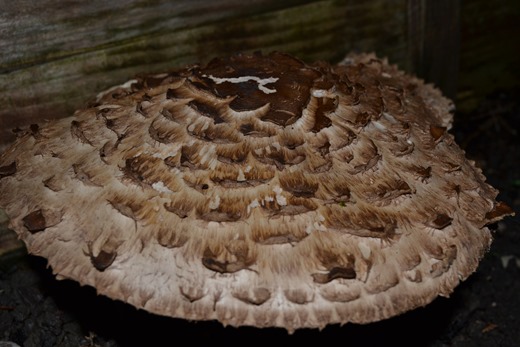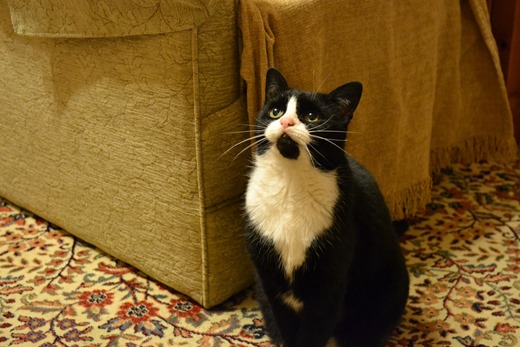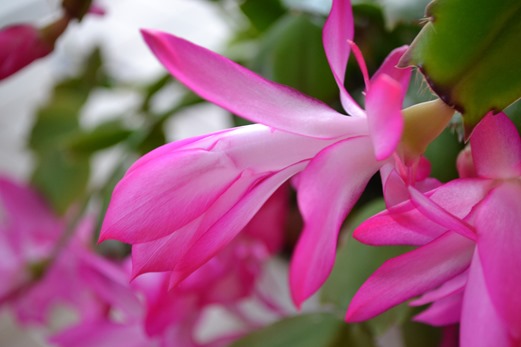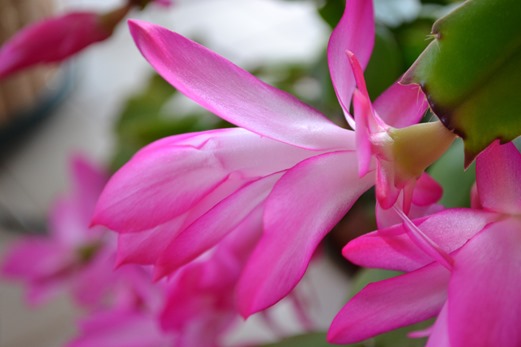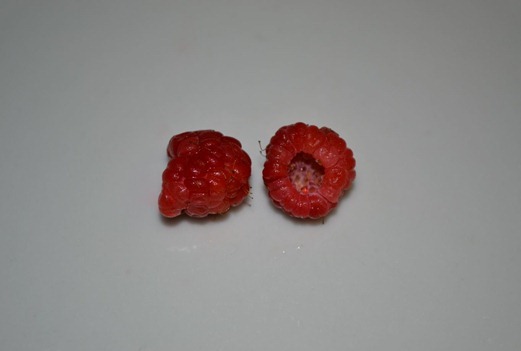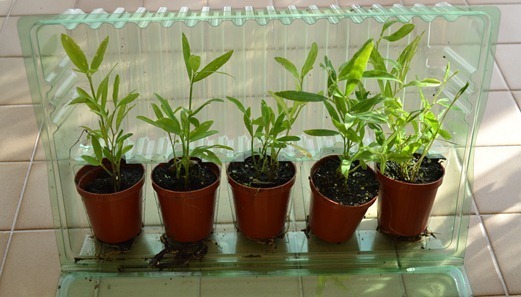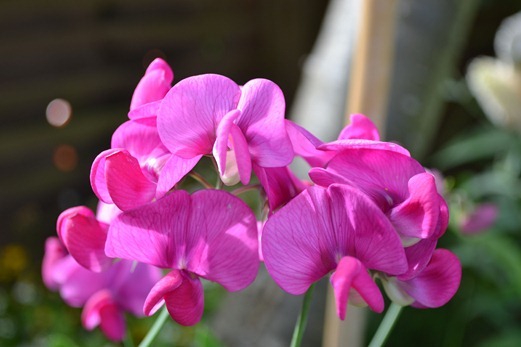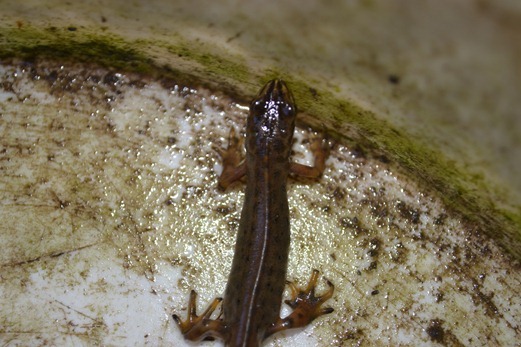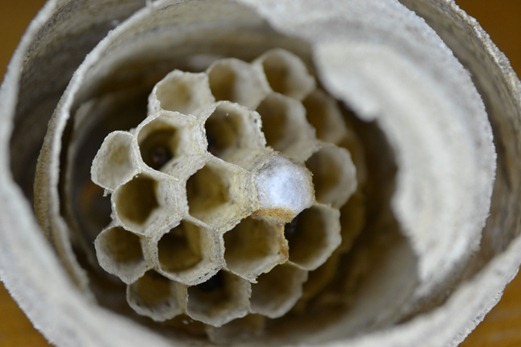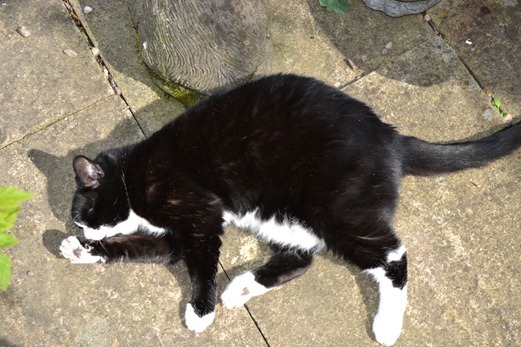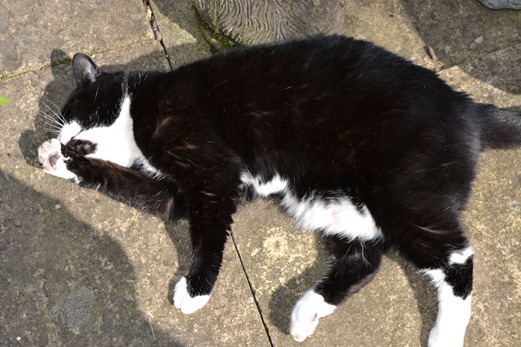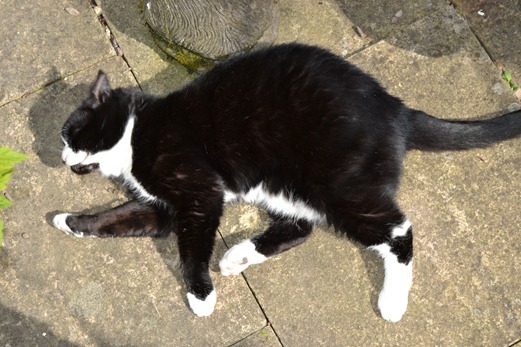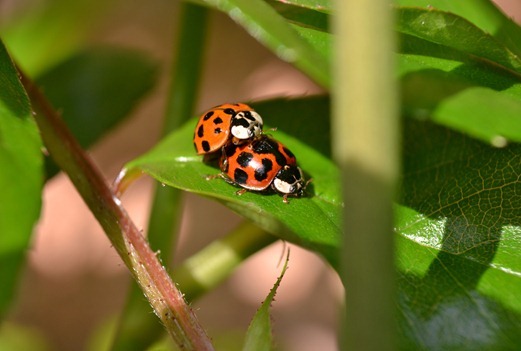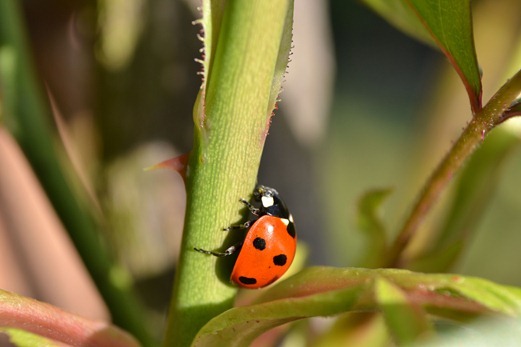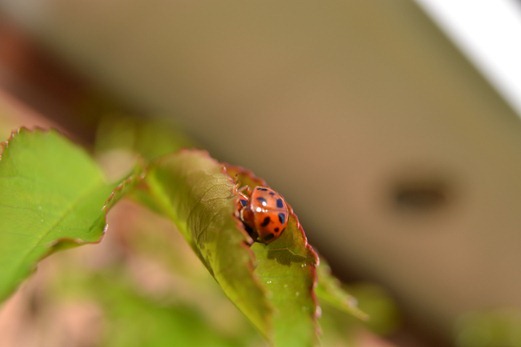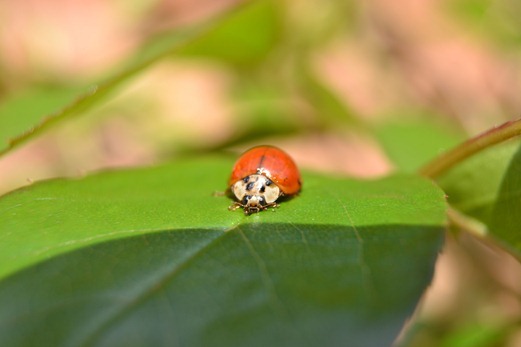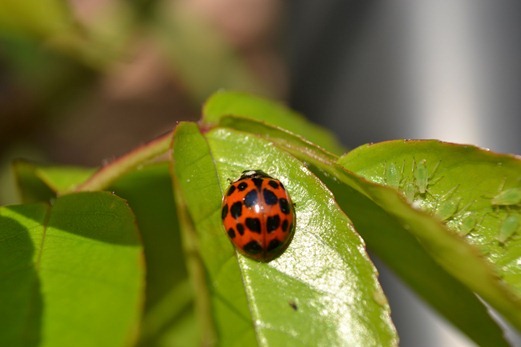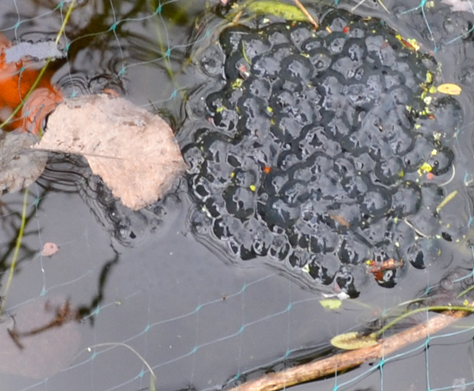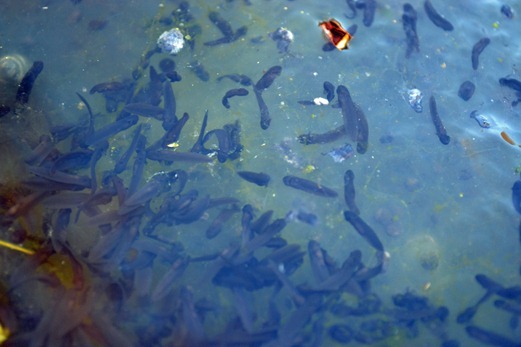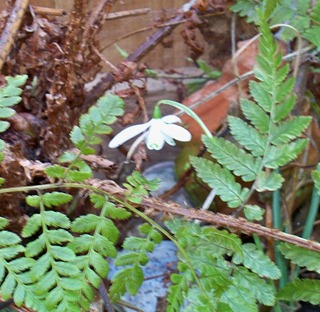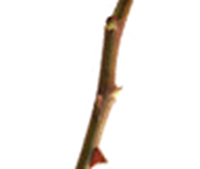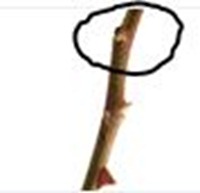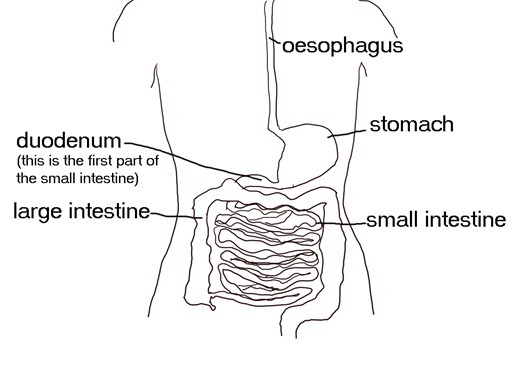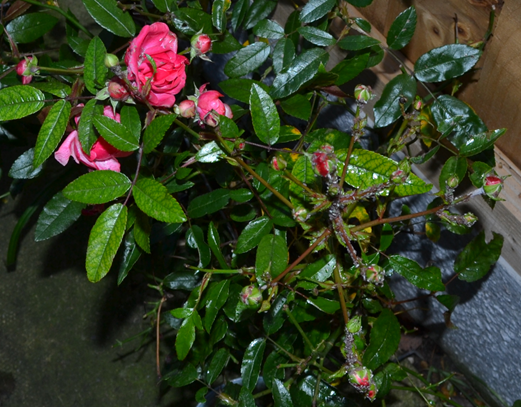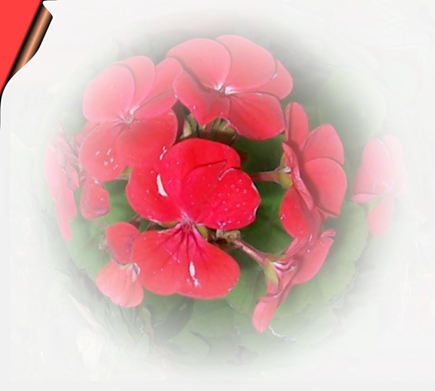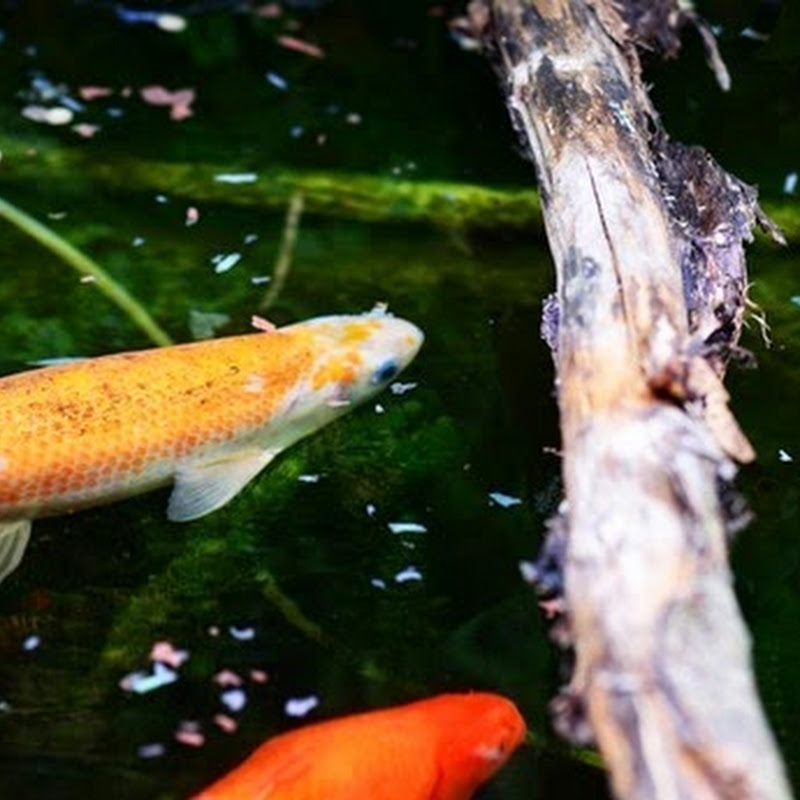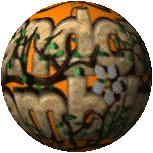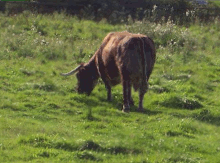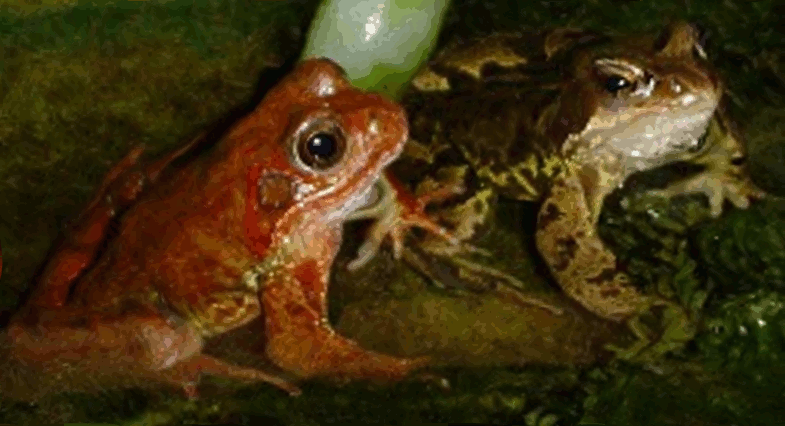Random Ramblings
Winter toadstool
This has been an exceptionally wet year. Month after month we have had damp, rain, drizzle, mist and not much sunshine. This has led to some unusual happenings. We had miniature daffodils blooming in November after finishing their initial bloom in April. This is also the first year I can ever remember seeing toadstools approaching the end of the year. This is a picture of one in my garden – I have tried to identify it but any that it resembles are listed as much smaller than this. It measures 7.5 inches (19cm) in diameter – a proper Alice in Wonderland special ..
Winter toadstool
Led and fibre optics
Early in December I got the old Christmas tree out, put it up and dressed it and as usual it looked lovely. A week later and temptation caught me, locked me up and threw away the key. In other words, I saw a Christmas tree that was twinkling with fibre optics and scattered with Led lanterns and I was drawn to it like a drug. I reasoned that our old tree, although very pretty could really do with replacing .. and so that is what I did ..
The Cat this December ..
Sometimes animals sport a certain look that creates a bond more with the viewer of the scene than with the animal themselves. This happens both with pets and wild animals. It is a certain look that has the ability to hook our hearts. This is a picture of our cat this December, a look we sometimes see but this is the first time we have managed to capture it in a photograph!
Christmas Cactus
I have a wonderful Christmas cactus! It blooms faithfully four or five times every year and its flowers are vibrant, almost fuchsia coloured, long and imperial. This Christmas I have had so many blooms. Each leaf is busily thrusting out buds, sometimes several at a time. I have found a new secret that enables my plant to create more flowers than ever before.
Christmas Cactus
Sharing my secrets with you:
For a Christmas or Easter cactus plant to flower it needs to have a small period of drought. So plant it with one-quarter sand and allow the potted plant’s soil to dry completely. When the leaves start to look a little puckered or rubbery (this only takes a week or two) then soak the plant with plenty of water and plant food (the best plant food for extra flowers is Tomato Fertilizer – add only a couple of drops of liquid feed to approximately one pint of water). Leave the plant in a windowsill or very light area, away from extreme draughts and it will flower persistently every couple of months.
Starting your own FORUM or MESSAGE BOARD
Forums or Message Boards are a wonderful way to promote either a Website, Blog, Events, Local Information, Recipes, Places to Visit, Health Information/Queries, Hobbies, General Chatter, Knowledge about Local Entertainments, Keeping in Touch with Friends, in fact the list is really endless. Why is it a good idea? Well firstly it is free, users do not need to log in, messages may be left using a ‘nick-name,’ pictures may be added, it is easy to both leave information and find information, it can be private – ideal for school children leaving messages for their friends and much, much more. So why not check out the options and perhaps start your own!
http://www.boardhost.com/home.html
Out of the Stone Age ………………..
December raspberries
We have had, what feels to be one of the wettest of years and although this must be a coincidence or climate change or possibly something else …. we now have raspberries. Twenty years ago I would have laughed and said “impossible!” However, this year here they are:
December … and raspberries! Whoever would have thought it possible in an English country garden?!!
Seeping poison
There is one very tiny substance that is creeping into almost every food item that is bought and yet some would say is nearly the most dangerous thing that can be ingested by both people and animals. It has four separate names depending from where it is sourced. These are: secalin, hordein, gliadin and avenin. Secalin is found in rye which used to be called secale; hordein is found in barley; gliadin is found in wheat, avenin is found in oats. All of these come under the heading of ‘gluten’ and this is the poison that attacks every organ of the body from the tips of the toes to the top of the brain.
Years ago, it was thought that gluten was dangerous and life threatening only to those people who developed Coeliac Disease. It has been found that there are hundreds of diseases that are brought on by gluten whilst others are made worse by gluten. The chances are that if a person has developed an illness and a cure hasn’t been found then it is wise to consider the possibility that gluten has had some part to play in this. Sometimes, if gluten is removed completely from the diet, a person will recover (as long as they never eat gluten again). Other times, the gluten has caused so much damage that although it is necessary to remove gluten from the diet the damage is such, that a person’s health has been destroyed completely from achieving complete full health again.
Sweet, sweet pea–perennial pea, everlasting pea
I have always loved sweet peas. The only problem being that the majority are annual and require planting each year and then need to have canes placed near to them so that they have somewhere to climb. A few years ago, I came across a perennial variety – how wonderful! Imagine a beautiful pea flower that comes up year after year!
Last year I saw some advertised on the Web and sent for them .. I must admit they looked extremely fragile and far more frail than I would have liked. So I placed them on a windowsill for a short while to enable them to strengthen up before planting them out. This is what they looked like when they arrived:
Young perennial pea plants
Most of them appeared to Winter quite well but only a couple have made it to the point of flowering – the remainder have simply withered away or been eaten by slugs. Above is my very first perennial pea flower to open just four days a go.
Perennial peas plant flowering – (Lathyrus latifolius)
Now just a few days later and they have blossomed into beautiful posy heads of flowers.
They are so pretty that I will cross my fingers that they do indeed survive the Winter and bloom again next year.
Forum/forums
People often skirt widely away from this name when they see it as an option on a search engine, probably because they do not understand what they really are and how useful they can be.
If you have never used a forum then now is the time to start. Firstly, in the search engine type in the topic that you are interested in finding information on then add the word forum – example -
Fishing Forum
To get the most out of any forum you really need to join. That way you can see everything that is written – all the questions that have been asked and answered by others and ask your own …. don’t be shy. You can have an anonymous name - like Alfred the Angler, FishingFriend or may be flipper fin. You can ask awkward questions, ask for tips or advice or offer your own. It is a brilliant way to find out things that are important to you and often get more in depth answers than looking for the same information from a website.
If you have a complex question then it is best to join several forums and type your question into all of them – that way you will have a wide spread of answers to consider and act upon.
Alien
I feel that this year we are experiencing a different planet to that which we are used to. There doesn’t appear to be any corner of the globe that in some way or other hasn’t been affected by unusual weather patterns. Flooding has been occurring year upon year and many places that were considered to be safe and untouched have had deep torrents rip through houses leaving thick sludge over floors and furnishings. Month after month of persistent rainfall has caused mud slides and rock slides. Whilst some have experienced being scorched crisp until the ground became like broken rock. We are being told that even the ice caps are melting with an increasing speed that is unknown in our history. Yet, how soon we put this aside and choose to forget when our own regions, our own circumstances are back to normal.
Perhaps, it is time to grow up – take responsibility – clean up our act – change what we are doing before this beautiful planet becomes an alien world and we no longer recognise any part of it.
Nature’s clock
It is wonderful that despite being delicate, how resilient some plants are. Even though we are having persistent heavy showers the beautiful, fluffy, soft dandelion clocks remain so perfectly formed and hold onto their seeds until the showers end and they are able to dry out their pappus. The pappus is made up of fine hairs which are whisked up by the wind rather like a parachute carrying its precious cargo an achene, the seed.
Dandelion clock showing the pappus and achenes - Taraxacum officinale
Red Lily Beetle or Lily Beetle - Lilioceris lilii
Although it is June, we are having heavy downpours of rain. Everything is utterly sodden and dripping wet. In between the heavy rain showers there are some unusual sightings. Here is one of them it is a Red lily beetle or Lily beetle .. it is known by both names. The adult beetle burrows down into the soil in late Autumn and will spend the Winter anywhere underground for protection. The beetles usually wait until a bright sunny April day to push up out of the earth and then they begin to look for lily leaves to lay their eggs. They continue laying eggs throughout the Summer. The eggs are laid in small numbers on the underside of the lily leaves and once they have hatched the plant is ravaged.
This beetle was happily clinging to a Purple Loosestrife leaf, which is nowhere near to my lilies .. but I am wondering if the beetle found one of my lily leaves or whether it flew off into someone else’s garden!
Red Lily Beetle or Lily Beetle - Lilioceris lilii
Lizzie Marshall - Lizme
A few months ago, I happened upon an artist called Lizzie Marshall. You may well know her as Lizme, for that is the name that she uses to sign her paintings with.
I was captivated with her distinctive style and her use of colour which immediately draw you into her pictures. She was born in South Yorkshire, which is as different to the rest of Yorkshire as Wales is to Scotland. It is the area of Robin Hood and the longbow strained from the yew trees (Taxus baccata). The people of this area are forthright with a depth of character and a sweet truth which makes them earnest, loyal and hard working. There is a purity of soul and an appreciation of natural things, which I think is present in Lizzie Marshall’s paintings.
Link for Lizzie Marshall’s day-to-day Blog
Lizzie Marshall, a Yorkshire artist
Eye of newt ..
This time of the year the pond appears to grow blanket weed like a candyfloss machine. The weed holds onto the sides like thrift clings on the edge of cliff tops. It then weaves its way through the oxygenating plants twisting and choking them so thickly that the fish have to fight for both light and space. Having tried everything on the market there still appears to be nothing quite as effective as a hands on approach. A gentle tug until the slimy green wispy web of a million plants has been prized off its moorings. Trying to untangle its weavings from other plants is not quite so easily achieved.
The most difficult task is to try and avoid damaging the natural wildlife that lives in both the shallows and the depths of a pond. This time, in amongst the pile of slimy blanket weed there appeared to be a black shiny eye peeping back .. it was a young newt. The sweetest of amphibians had been rescued and placed gently back in the water of the pond, once most of the blanket weed had been removed.
Common Newt or Smooth Newt (Triturus vulgaris) – young newt
The English drought of 2012
The Winter was considerably dry and with the lack of usual rainfall in the previous Autumn that meant we were reliant on heavy snowfalls and a wet Spring to top up the water table. We did have snow but nothing like the quantity we needed for ensuring plentiful water to be deposited in rivers,lakes, canals and reservoirs. Winter tumbled on into March and suddenly we had Mediterranean weather – beautiful sunshine and temperatures in the lower 20’s (Celsius). People tore off their Winter garb and quickly embraced T-shirts and light-weight Summer garments.
Several rivers have caused concern including the river Rye in Yorkshire, which dried up in places. This meant that the Environment Agency had to take action and save as many fish as possible from areas where the river had ‘ponded.’
As soon as we turned April over on the calendar their was talk of drought – hosepipe bans – water shortages – problems with dry crumbling soils – spoiled crops . . . then the rains began. Not the usual light showers followed by hours of sunshine but relentless heavy battering drops that thundered on and on day after day, April temperatures fell back down the scale.
Now we are well into May and still we are having showers and bleak, grey days and frosts in many areas at night. The water table in many areas has increased to such a point that most of the country is now not in drought, though the South-East is still in need of quite a bit more rainfall. Areas of the country have received quite large deposits of snow and others have had heavy hail storms. The rest of us are secretly longing for a lick of sunshine and a bit of warmth, perhaps just a hint that it may not be too long before we can don some Summer clothes and share some space with the bees!
May be?
This is the first year that I can remember, in such a long time, that English bluebells are still flowering well into the ‘merry month of May.’
Every year, as a child, my father would take me bluebell picking. Most of the bluebells in our area lined country lanes and grew in thick masses on the far side of brooks, streams and deep ditches, all of which supported tall, broad-leafed stinging nettles. For every other bluebell picked came a soft hair brushed against naked skin, a piercing pain and a bump or two as the rash appeared. Then a mixture of pain and itch and the urgent need to pick a dock leaf to rub on the wound and ease the rash.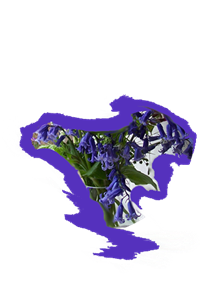
Wasp wave
A warning was issued yesterday that we may well be in for a swell in the number of wasps and wasp nests this year owing to the type of Winter we have experienced. When anyone mentions the word wasp most of us think of the yellow and black insect that dons a painful punch in the form of a sting. There are however many more varieties the largest of which is the Hornet (Vespa crabro), followed by the two versions that we see around sweet sticky foods and fruits the Common wasp (Vespula vulgaris) and the German wasp (Vespula germanica), the Red wasp (Vespula rufa), the Tree wasp (Dolichovespula sylvestris), the Norwegian wasp (Dolichovespula norwegica), and the Median wasp (Dolichovespula media) a species that arrived in Britain around 1980.
Whilst venturing up into the loft, I was surprised to see the small circular beginnings of a German wasp nest attached to the main beam overhead and neatly packaged in a little space on the right-hand side of the wood. Both the Common and the German wasp nests are created out of a sort of paper which is made by the wasps. German wasp nests differ from the Common wasp nests in their colour, as the German wasp nest is grey in appearance.
German wasp (Vespula germanica), nest
Granite grey
Kit cat
There is something wonderful how a cat has perfected the art of exercise. A stretch here and an arch there, an occasional stroll, an optimistic purr and the creation of a lean, athletic living machine paddles joyfully at the arrival of each new day.
The cat managed to stroll, stretch and nap .. all in between the April showers!
Will this be the year of the Ladybird?
Every so often a specific insect population takes the top spot. I’m not sure whether it has anything to do with certain weather conditions or whether insects just have cycles. Judging by the amount of early Ten-spot ladybirds there are around at the moment this could well be the year of the ladybird.
If we are to have wonderful plagues of this small brightly coloured insect, it couldn’t have come at a better time. The reason I am so excited at the prospect of having swirling masses of one of my most favourite of insects is that it has come at a time when we are being invaded by an Asian strain that has been given the old world name from around 1779 of ‘harlequin.’ Oh how innocuous harlequin sounds to the ear! Yet it is larger and more deadly than every other ladybird we have on our shores and apparently besides eating both the young and fully grown adult ladybirds of the British Isles, also nests inside buildings in large quantities and it bites!!
The British ladybird ten-spot is well noted for its variety in appearance, which if anything helps the harlequin ladybird to stay hidden as it slowly creeps Northwards ..
I have taken a few pictures of some of the wonderful colour displays and variations of the ten-spot which are currently flying about.
Ladybirds
The year marches on
March was a strange mixture of warm sunny days, dry,dry ground of drought and colourful tapestry detailing pin-points of new life. For the first time in recorded history, English bluebells have bloomed in March. Frogs spawned early and tadpoles wiggled above their jelly cases.
English bluebells - Hyacinthoides non-scripta
Frogspawn
Very young tadpoles of Rana temporaria or the common frog, resting on top of egg (spawn) casings
Solitary snowdrop
There are now all sorts of shoots and sprouts pushing their way through the soil to greet the air. Along with the old perennial faithful’s, I now hopefully have one or two new offerings that were planted in the late Autumn and hopefully will flower this year. I also do have a mystery. In one of my flower tubs there has suddenly appeared a solitary single snowdrop. It has never been planted and I am left wondering where it could have come from.
Snowdrop - Galanthus nivalis
The Washing Song
As I was going to the fair,
I met a maid with golden hair.
The sweetest smile on rosebud lips;
The bluest eyes to sail the ships.
Where did she come from?
Where did she go?
I’ve often wondered ..
But I’ll never know.
With a heigh-nonny-nonny-nonny-nonny-nonny-no
With a heigh-nonny-nonny-nonny-no!
Shorter nights
It is wonderful to think that the nights are now getting shorter and the evenings lighter. The birds though are still flying right up until the very last snip of light is present in the sky. The other day it was so near dark that a late flying blackbird almost got mistaken for a very large bat, fortunately he tut-tut-tutted his single note warning call to tell the world that he was indeed a blackbird.
Jobs, job titles, occupations
I accidentally came across a site which listed the titles of jobs and what they were over the ages and found myself intrigued. It must have taken an unearthly amount of time and dedication to have found so many varieties of jobs and patiently list them all alphabetically. I felt that it is something that shouldn’t remain hidden and so I would like to share it with you. Please dive in, visit the site and be lost in this time machine of life a long time ago:
- Full list here: Old English occupations
Here is a very tiny sample of this very special site – thank you to the person who put the whole list together – I hope all of you visit it and treasure it and enjoy it as much as I have .. The site is called http://www.worldthroughthelens.com enjoy!
ACATER: supplied food provisions, e.g. a ships chandler
ACCIPITRARY: falconer
ACCOMPTANT: accountant
ACCOUCHEUR or ACCOUCHEUS: assisted women in childbirth. A physician skilled in the art and science of managing pregnancy, labour and the puerperium (the time after delivery).
ACCOUTREMENT MAKER or ACCOUTRE: supplied military accessories.
ACKERMAN or ACREMAN: A man who ploughed or cultivated the land. An ox-herder or ploughman
ACTOR: A theatrical performer. Performed on stage to audiences. (In the past, only men could become actors. In the ancient and medieval world, it was considered disgraceful for a woman to go on the stage, and this belief continued right up until the 17th century.)
ACTUARY: kept public accounts of business
ADMINISTRATOR: directed the affairs of another
ADVERTISEMENT CONVEYANCER: sandwich board man
ADVOCATE DEPUTE: Scottish law officer who could act a public prosecutor
ADVOWEE: normally a nobleman, who had the right to present a clergyman to a benefice
AERONAUT: balloonist or a trapeze artist in the circus or music halls
AFFEEROR: Assessor official in the manorial courts who assessed the monetary penalty, collected taxes and dues
AGISTER: The official of the Royal Forests or in the New Forest it is the title for the one in charge of the ponies
ALABASTERER: worked with alabaster
ALBLASTERE: crossbow man
ALCHEMIST: medieval chemist who claimed to be able to turn base metals into gold
Early prune for prolific bloom
Country gardeners try to prune their roses on the last week of January. This usually ensures many more buds and flowers forming on the roses later in the year. The old saying is:
- January prune for July bloom.
Bush roses are best pruned right back to within a few inches of the ground. The small buds should be appearing on the stems and to help the bush to form pretty and symmetrical shapes it is best to look for an outward facing bud then snip slightly above about half the width of a fingernail, cutting away all of last year’s growth. Check for any dead wood or branches and cut away those as well. Dead wood often allows disease to climb into the plant and leads to a weakened root system. Once the job has been completed then sprinkle some dry fertiliser around the plant either pellet or powder.
All roses appear to form into healthier plants if they are pruned back harshly and this prevents them from creating too many flimsy and weak branches which either never produce blooms or produce withering buds. Watch carefully for branches that come from below the soil line. If these produce leaves that are different to the rest of the plant then cut these right back as they are known as suckers and originate from the original wild root stock. If these are allowed to develop then the whole plant is in danger to becoming weak and eventually could revert back to its wild root stock origins.
Prune harshly, snip just above an outward facing leaf bud.
Happy Chinese New Year to you all - 恭禧發財 Gong Hey Fat Choy
It’s the year of the Dragon …. 福壽雙全 “May your happiness and longevity be complete.”
23rd January 2012
Coeliac Disease–pronounced ‘see-lee-ack’
Coeliac disease can occur at any time in life, from when a child is weaned, during adolescence, in their twenties, thirties, forties, fifties, sixties, seventies, eighties and nineties. In fact, it can occur at any point during a person’s life time. It often runs in families and so if one person is diagnosed with the condition it makes sense for all members of the family to have a simple blood test to make sure that they are clear of the disease.
Coeliac disease is an autoimmune disease. This means that the body turns against itself and begins to attack itself. This occurs when a person eats the proteins found in common grains. The proteins are often referred to as gluten and they are found in wheat, barley and rye. Often as oats are from the same family source as wheat, barley and rye there are many coeliacs who find themselves also highly sensitive to oats. Some coeliacs, however, are able to eat ‘gluten free’ oats whilst others have to rule oats completely out of their diet.
Any part of the body whether it is an organ, bone, muscle, nerve, digestive system, etc can be affected when a person eats gluten and they have become a coeliac. The body doesn’t recognise gluten as food and it produces antigens which bombard the small intestine flattening the tiny hairs that line it. Over time these become withered. These little hairs are called villi, they wave about so that items of food slowly pass over them allowing the nutrients and goodness to be absorbed into the bloodstream. Once these small hairs or villi become damaged, the whole of the body becomes malnourished and vulnerable to disease and pain.
There is no actual cure for coeliac disease but it is essential for anyone that develops it to abstain from eating any food that contains gluten for the rest of their life. Over time, the body will repair the villi in the small intestine so that it can once more absorb all of the nutrients provided in the diet.
If a person carries on eating gluten (even in small amounts) and they have coeliac disease then they will probably go on to develop very serious secondary diseases such as osteoporosis.
Symptoms that may occur to highlight the onset of coeliac disease
It is always wise for those who have recurrent irritable bowel like symptoms (IBS) to be screened with a blood test for coeliac disease.
Listed below are an array of common symptoms experienced by people with coeliac disease. A person may have no noticeable symptoms or possibly one or more of this list of symptoms:
Tiredness, poor sleep patterns, headaches, heartburn, indigestion, acidic stomach, reflux, constipation and/or diarrhoea, bloating, stomach pains, stomach cramps, ulcers and/or mouth ulcers, mouth blisters, blood blisters in the mouth, bruises on the skin, bruises in the mouth, marks on teeth similar to fluoridation markings, memory stalls, sinusitis, sciatica, neuralgia, swollen ankles, occasionally swollen legs, skin rashes, dry patches, dry eyes, itchy eyes, dry mouth, weight gain or weight loss, hair loss, nausea, vomiting, nerve pains and aches, muscle and joint pain, depression, numbness or tingling in hands and/or feet, difficulty conceiving, deficiency in any vitamin or mineral especially vitamin B12 and iron, melancholy, thyroid problems, tinnitus.
If you suspect that there may be a possibility that you or a member of your family could be suffering with coeliac disease then see a practitioner/doctor and ask for a blood test.
For more information and help with coeliac disease please visit the Coeliac Organisation Website
Priorities
Get diagnosed >> eliminate all gluten from the diet (this will include even items such as modified starch, sugar syrups, beer and wines brewed from grains or containing grains) >> make every meal nutritious and try and eat whole foods such as meat, fish, eggs, vegetables, dairy including: milk, cheese, yoghurt, cream, butter; fruit, nuts, honey, millet, quinoa, whole brown rice, basmati rice, long grain rice, short grain rice, tapioca, sago, chestnuts, coconut, teff, sorghum, sunflower seeds, sesame seeds, pumpkin seeds, lentils, chickpeas, buckwheat which is from the rhubarb family and not a grain, corn/maize – look for natural foodstuffs (you need to mend your body). Baking powder/soda needs to be labelled ‘gluten free’ as does mustard powder. To improve health you will need to read every packet, bottle and can, because even a minute amount of gluten introduced into the diet will cause health issues that often last for several days or weeks after it has been consumed.
Note: Vegetable roots, nuts, seeds and grains are often ground into flours offering a wide variety of flavours and nutrients that can be added in home cooking when making bread, cakes, puddings and pies – take every opportunity to introduce the widest range of food items into the diet. The aim of a good diet is to give your body the chance of optimum health so only put nutritious and natural foods into your mouth and give your digestive system a fair chance to mend itself and a reasonable chance to remain healthy.
Issues with gluten
There are many who believe that gluten itself may cause some people to experience all kinds of health problems as it often appears difficult to fully digest. At this point in time, however, there are no official guidelines to advise excluding gluten from the diet unless diagnosed with coeliac disease.
Diagram of the digestive system which includes the oesophagus or gullet, the stomach, the first part of the small intestine or duodenum followed by the remainder of the small intestine (which can vary in length from approximately 4.5 metres to 9.5 metres) and the large intestine(approximately 1.5 metres in length).
January jumble
What a month! It is a helter-skelter, a waltzer, a ride of changes. There have been highs of double figures followed by crisp-crunch frosts and now it is warm once more.
Robins sing eerily through the night alongside distant long hoots of owls. Some nights the sky dances giddily with clouds like ladies from a Jane Austen novel floating over a dance floor. Other nights are black and bejewelled with millions of diamonds randomly scattered over a jet sky. Some days a light breeze licks at last year’s geraniums and plucks at the feathers of birds that parade along the branches of the apple trees. Whilst others are creeping with damp blankets of thick dew that cover everything. Mornings may be brittle and grey or full of bright sunshine and we toss and turn waiting to see what is on offer.
Anonymous publishing
When we live in a country that encourages freedom of speech and it is second nature to say what we think, it is difficult to remember that in most places in the world it is hazardous to say the most innocent thing. Everything that is either written or spoken has to be carefully examined, diluted and often kept for another time which will most probably never come.
There is a programme called ‘Click’ that this week, told of an interesting website that allegedly allows anonymous publishing – so that anyone with access to the Internet, from anywhere in the world, can make a webpage and have true freedom of speech.
The website to join for true freedom of speech is http://pen.io/ … find out more here http://about.pen.io/
Why not join and create a little piece of history expressing your thoughts to the world. ![]()
I appear to be growing greenfly!
I decided to venture out into the garden today because surely I had imagined the attack of the aphids for they don’t creep and crawl about in England in Winter and in early January, do they? Apparently, they do either that or I have a completely new plant that is growing greenfly!! If this keeps up I will need to find a mountain of ladybirds and ants to reclaim the roses back.
Winter wings to Spring
January is filling nature with confusion this year. It has begun with a mild spell which has left the geraniums in full bloom – imagine geraniums in full bloom in mid-Winter in England! Some of the rose bushes still have flowers and buds which are writhing in greenfly. At the same time, there is still no evidence of some of the deep planted perennials but others have promising shoots bright and tender green. Song birds are singing all night long although the night is pitch as clouds hide away the stars and moon. The apple trees have produced buds of soft green fur whilst still tossing away the remainder of last years leaves. The fish in the pond have taken up Latin American dancing as they wind their bodies together in a slow salsa whereas normally they tread water silent and still towards the water’s bottom. There is a permanent excitement in the air as doves call by day and owls by night and just as light cracks its way through the early morning the entire crow family descend pulling at everything that resembles any sort of food.
